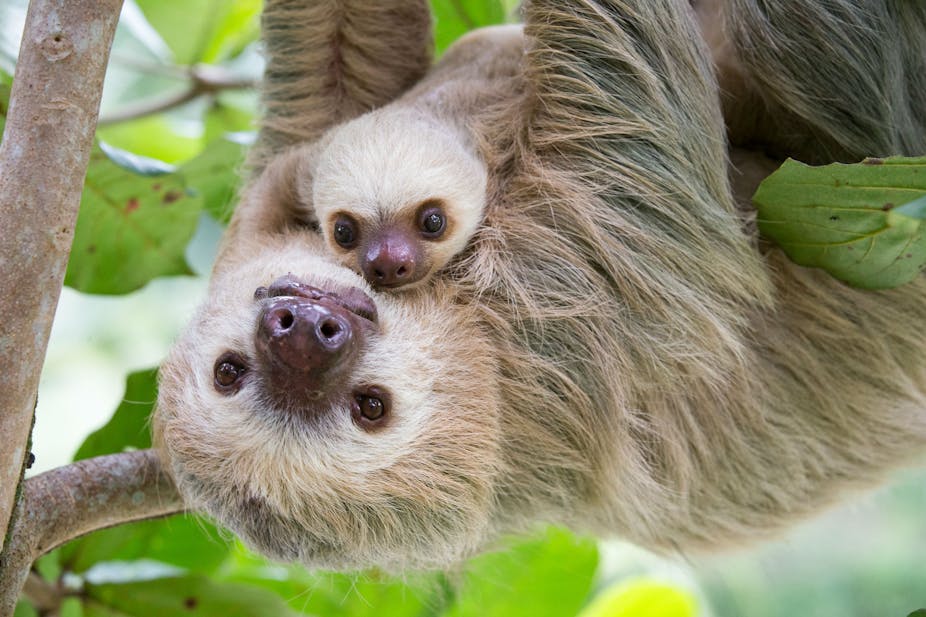It also helps them to survive. Physiologically sloths are heterothermicthat is they have imperfect control over their body temperature.
 Where Sloths Find These Branches Their Family Trees Expand The New York Times
Where Sloths Find These Branches Their Family Trees Expand The New York Times
They survive because of their slow movement.

How do sloths survive. The creatures move only sparingly like crocodiles. Sloths really are that strange doing many things that other mammals do not. They are long and sickle shaped.
While many sloths can live to be over 20 years old there are predators and other dangers that can end their lives early. Due to Sloths not having incisors the sharp pointed teeth next to our front teeth they use their strong and firm lips to munch down on leaves twigs and some fruits. Sloths need leaves and water to survive.
They need to be in a very warm climate to survive because there body temperatures are very low. Sloths have a slow metabolism which makes them move slowly. Sloths munch on leaves twigs and buds.
The two species are quite similar in appearance with. Most of a sloths existence -- around 15 hours a day -- is spent hanging upside down from trees a lifestyle made possible by claws that are long and curved. Sloths mainly the three-toed sloths have the lowest rate of daily energy use of any non-hibernating or non-aestivating mammal found on earth and use the heat of the sun to thermoregulate themselves.
Normally ranging between 25 and 35 C 77 and 95 F body temperature may drop to as low as 20 C 68 F. Two-toed sloths tend to switch trees on a nightly basis. And the sloths who died by usual death rarely fall to the ground and their corpses adorn the branches of trees until they are harpied by harpy.
Sloths have a low metabolic rate and a low body temperature 91 Fahrenheit. They give the sloth incredible grip to the branch it is hanging from. A low metabolic rate means sloths can survive on relatively little food.
Sloths have small molars which they use to chew up their leafy food. Another advantage the sloth has are its claws. There are two main species of sloth identified by whether they have two or three claws on their front feet.
Because the animals dont have incisors they trim down leaves by smacking their firm lips together. Their bodies do not fall down continuing to hang on the wires. Sloths descend to the ground at approximately six-day intervals to urinate and defecate see Sidebar.
This keeps their food and water needs to a minimum. Leaves are actually very low in nutritive value. Also the metabolic rate slows down their food processing time.
What do sloths eat. The sloth survives many injuries that would kill other animals. They rarely defecate like snakes.
Sloths descend to the rainforest ground about once a week to urinate and defecate. This has made them survive with the lowest use of energy. It takes days for them to process what other animals can digest in a.
Often sloths are approaching the places manned by man and die from electric shocks clinging to the electric line. They enable the sloth to hang from the branches of the trees it lives on. Sloths have a very low-energy lifestyle because they eat leaves.
Sloths are tropical mammals that live in the tropical forests of Central and South America. A sloth attached a tree is almost impossible to pry free. They cant move their eyes.
As for the two fingered variety they are able to survive captivity because of their more resilient nature and flexibility in diet eating all sort of food items from. A sloth has a huge stomach and it takes days or even weeks to digest its food. Their metabolic rate allows them to need little food to survive.
Their stomach has many separate compartments that are used to digest the tough cellulose a component of plant material that they eat. In order to survive sloths have developed adaptations which are changes.
